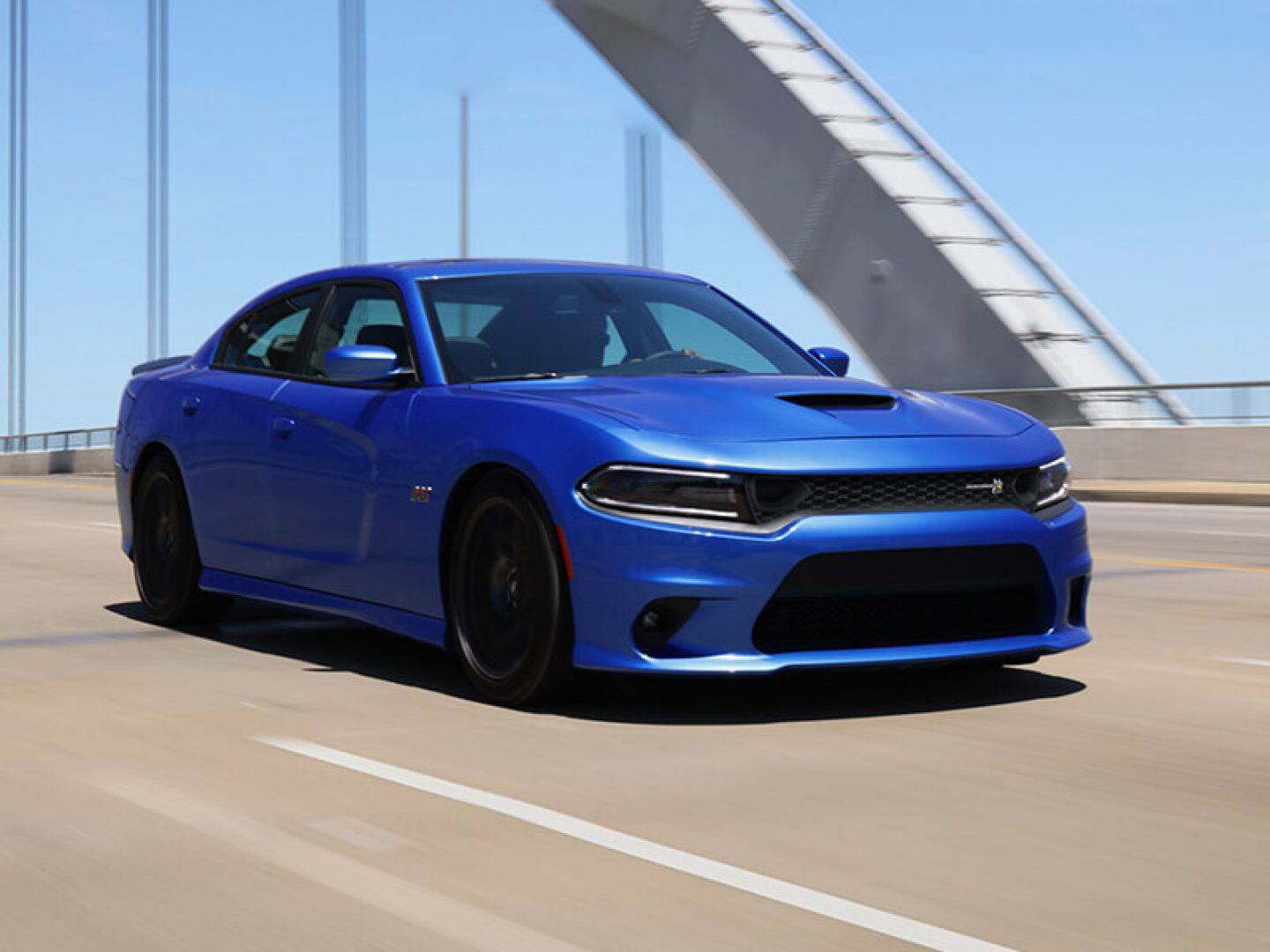In the space of modern automotive design, styling often takes precedence over practicality. Sleek lines, sloping rooflines, and dramatic rear-end profiles are highly sought after, especially in the sedan segment, where visual flair is used to compete with the growing SUV market.
As a result, many sedans today look striking from the outside, but for the driver inside, they can pose real visibility challenges. One of the most glaring outcomes of this style-over-function trend is the emergence of tiny rear windshields, which often come as part of an overall push to give sedans a “coupe-like” aesthetic.
While these small rear windows contribute to a more aggressive and elegant silhouette, they can drastically reduce rearward visibility and create everyday driving headaches.
Tiny rear windshields in sedans can compromise safety, ease of driving, and overall user experience. Rear visibility is critical when reversing, parking, changing lanes, or simply monitoring the traffic behind. A narrow field of view forces drivers to rely more heavily on backup cameras and sensors, which, while helpful, are not foolproof.
Glare, rain, snow, or poor camera placement can render tech-based systems less effective. When you can’t see well out of your own windows, driving becomes a more cautious and mentally draining experience. Rear defrosters also struggle to efficiently cover extremely small or oddly-shaped windows, further reducing usability in cold climates.
While automakers aim to create futuristic designs, the payoff in style doesn’t always justify the functional loss, especially in everyday scenarios like crowded urban streets or tight parking lots.
This article highlights ten sedans known for their unusually small rear windshields. These models, while often praised for their design, performance, or luxury features, fall short in terms of rear visibility. Whether due to dramatic tapering rooflines, thick rear pillars, or shallow glass angles, these cars create significant blind spots and limit what you can see behind you.
From luxury brands to mainstream favorites, each of these sedans demonstrates how design choices affect real-world driving. If rear visibility is a priority for you, as it should be, these are the sedans you might want to approach with caution.
Also Read: Top Engines That Can Survive Without a Working Cooling Fan
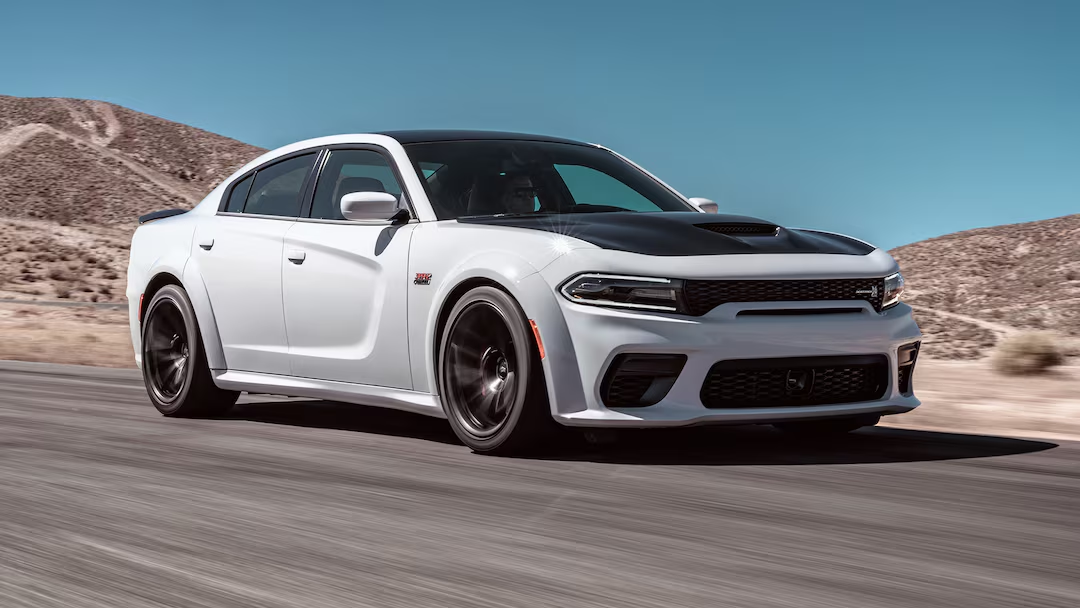
1. Dodge Charger
The Dodge Charger is a muscle sedan icon, known for its aggressive styling and powerful performance. However, that aggressive look comes at the cost of visibility, especially when it comes to the rear windshield. The sloped rear roofline that gives the Charger its distinctive fastback shape narrows the angle and size of the rear window significantly.
Drivers often report feeling like they’re looking through a tunnel when glancing in the rearview mirror. The combination of high rear deck height and shallow window angle compresses the field of vision, making it difficult to accurately gauge distance when reversing or monitoring traffic behind.
In addition to the sloping design, the Charger’s thick C-pillars contribute further to the visibility problem. These wide supports frame the small rear windshield and block peripheral views. Drivers trying to change lanes or reverse into a parking space often find themselves second-guessing what they can or can’t see behind them.
This isn’t just a cosmetic issue—it has real implications for safety and daily driving convenience. Even though the Charger offers a rearview camera, the limited natural view means drivers have to rely almost entirely on technology to fill in the gaps.
In bad weather or low-light conditions, the Charger’s visibility issues become even more pronounced. The steeply angled window doesn’t defrost as evenly or quickly, and the small size means it doesn’t let in as much light.
While the car’s bold styling and engine options make it a thrilling ride, its poor rear visibility is a constant reminder that muscle car flair often comes with real-world drawbacks. For those who prioritize a clear view of what’s behind them, especially in urban driving, the Charger can feel frustrating to live with.

2. Toyota Camry (TRD and XSE Trims)
The Toyota Camry has long been a reliable midsize sedan, but the sportier TRD and XSE trims bring a more aggressive design—and a tighter rear windshield. These models feature a raked roofline and raised rear decklid that squeeze the dimensions of the rear glass significantly.
From inside the cabin, this design limits the vertical viewable area in the rearview mirror. Drivers moving from earlier Camry generations often note how much smaller and more restrictive the view out the back has become in these sport-tuned variants.
The change isn’t just aesthetic—it has a functional downside. The small rear windshield, combined with a high beltline and rear spoiler (on the TRD), creates visibility challenges that weren’t present in the base Camry models.
When backing out of parking spots or checking traffic behind, the view is narrow and obstructed. While Toyota includes a rearview camera and optional rear cross-traffic alert, the reliance on these technologies becomes more pronounced in everyday driving. For families or urban commuters, the lack of a broad rear field of vision may come as a disappointing compromise in an otherwise well-rounded car.
Additionally, the interior cabin layout in these sportier Camrys compounds the issue. The sloped roof limits rear headroom, pushing rear passengers slightly lower in the seating position, which can also impact outward visibility for them.
The rear window is tilted in such a way that it captures more of the trunk than the traffic behind it. In poor weather conditions or nighttime driving, the limitations of the tiny rear glass are even more evident. While the TRD and XSE bring a welcome dash of excitement to the Camry line, their styling choices do come with practical sacrifices.
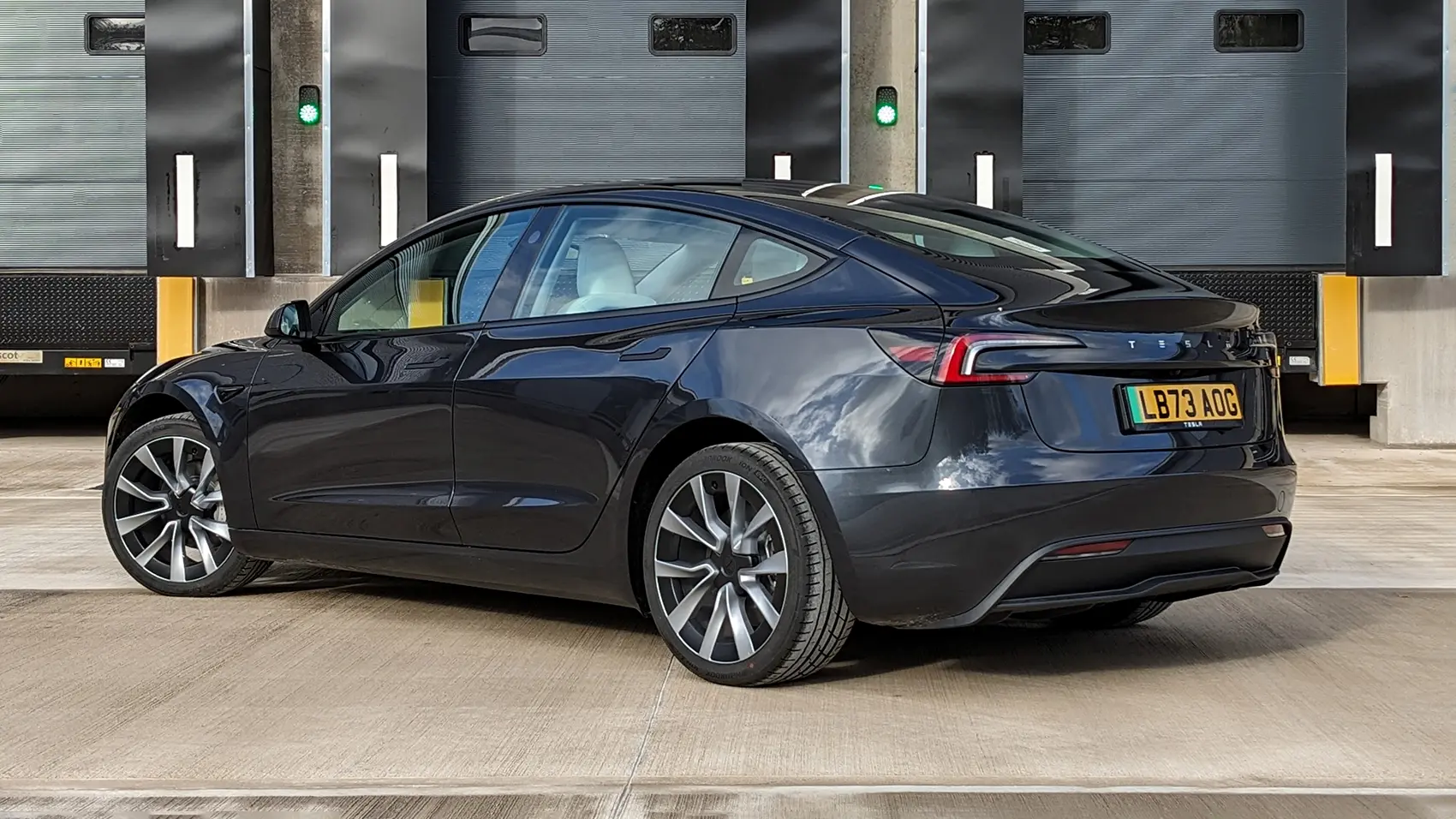
3. Tesla Model 3
The Tesla Model 3 is often praised for its minimalist design, tech-forward interior, and cutting-edge EV platform but it’s also one of the sedans with the smallest rear windows on the market. The rear windshield is sharply raked and blends into the glass roof, creating a sleek, modern silhouette that looks stunning from the outside. However, this fastback-style glass design dramatically limits rearward visibility. From the driver’s seat, the rearview mirror offers a narrow slit of view through the back, making it difficult to rely on for anything beyond basic awareness.
What makes the situation more complicated is Tesla’s reliance on cameras and sensors to supplement traditional views. The Model 3 includes a very effective backup camera and blind-spot alerts, but the driver still doesn’t get the full field of vision that a more upright, traditional sedan design would allow. Even minor obstructions in the back seat or on the rear parcel shelf can block most of the limited view. For drivers coming from more conventional vehicles, this can be jarring and somewhat anxiety-inducing in tight driving situations.
At night or in inclement weather, visibility is further reduced. While the car’s glass-to-glass design is high-tech and future-looking, the shallow angle of the rear window means defoggers have a harder time keeping it clear. Snow and water runoff often accumulate in unusual patterns, complicating things further. Tesla may have engineered a beautiful, minimalist car, but the rear visibility limitations of the Model 3 are a practical downside that cannot be ignored, especially for those who prioritize situational awareness over style.

4. Honda Civic Sedan (10th and 11th Generations)
The 10th and 11th-generation Honda Civic sedans have embraced a sleeker, more modern design language that brings a fastback-like profile to the once upright Civic. While this styling evolution has been praised for enhancing the Civic’s presence and aerodynamic efficiency, it’s also led to a dramatic shrinkage in the size of the rear windshield.
From the driver’s seat, the rearview mirror offers a shallow and narrow glimpse of what’s behind, and the sloped glass angle compresses the vertical field of view. This limits a driver’s ability to quickly spot low-lying objects or judge distances when reversing.
One of the core issues lies in the way the rear pillars wrap around the back glass. The C-pillars in these Civics are thick and positioned in a way that further narrows the already-small window. For drivers trying to check their blind spots or scan for cross-traffic, this setup makes quick head checks less effective.
Compounding this, the high rear decklid restricts what you can actually see through the glass, as it cuts off much of the road directly behind the car. Honda’s backup camera does alleviate some of this pressure, but again, it’s a tool meant to assist, not entirely replace the natural view.
In city driving and crowded parking lots, the limitations of this small rear window become very noticeable. Reversing into a spot or backing out of a driveway often feels like you’re guessing, especially in tight spaces or when obstacles are lower to the ground.
The small glass area doesn’t allow for much peripheral awareness, forcing the driver to depend more heavily on mirrors and sensors. That creates a situation where confidence in maneuvering is reduced, especially for new drivers or those transitioning from vehicles with better rearward visibility.
Weather conditions only make things more challenging. The steep angle of the rear glass means water and dirt cling longer, even with functioning defoggers or rear wipers (which the Civic doesn’t always have). During snowstorms or heavy rain, visibility through the rear glass can drop to near zero, relying entirely on the camera or sensors. While the Civic continues to be a reliable and efficient sedan, its rear visibility has taken a clear step back due to design priorities centered more on appearance than practicality.
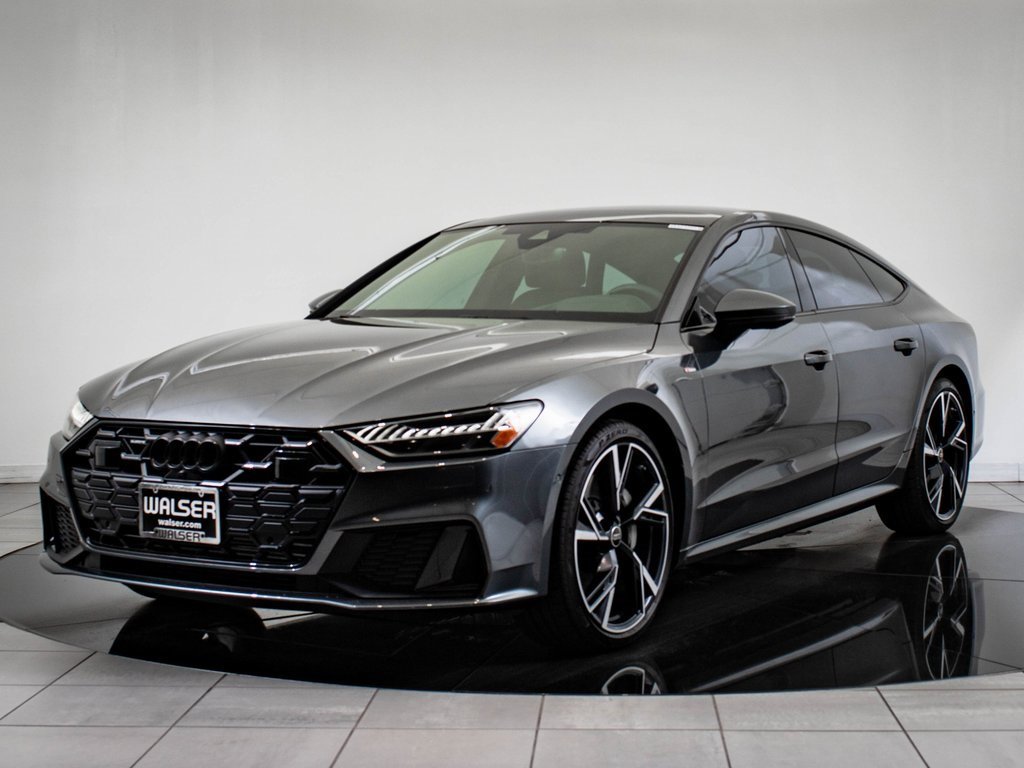
5. Audi A7
The Audi A7 is a luxury sportback sedan that turns heads with its elegant, flowing lines and sharply tapered rear end. The vehicle’s design is undeniably beautiful, but it comes at the expense of rear visibility. The A7’s tiny rear windshield is integrated into the hatchback-style liftgate, which is steeply raked and narrow in height.
From inside the cabin, the rearview mirror shows only a sliver of what’s behind, offering one of the most limited views in this segment. It’s a striking case where high-end aesthetics directly compromise driver awareness.
In addition to the narrow glass, the A7’s massive rear pillars and high trunk line contribute to significant blind spots. When you’re sitting behind the wheel, it feels like you’re looking out of a narrow tunnel. The visibility challenge becomes even more prominent when reversing, as the shallow angle of the rear glass severely limits your depth perception. Even though Audi provides a highly advanced camera system, including a 360-degree view, this does not fully replace the assurance that comes from being able to physically see the environment with your own eyes.
This becomes especially noticeable in tight parking garages or narrow streets, where clear sightlines are essential. Drivers often have to rely on parking sensors and technology more than they’d like, especially in poor lighting or rainy weather.
And while Audi’s camera system is reliable, the psychological strain of “driving blind” through the mirror remains, particularly during fast lane changes or quick reverse maneuvers. This setup can be a dealbreaker for some, despite the A7’s otherwise stellar driving dynamics and luxurious appointments.
Beyond the practical impact, there’s also a broader safety concern. Small rear windows limit natural lighting into the cabin, reduce passenger visibility, and make it harder to identify approaching vehicles or pedestrians in motion. For a car that excels in nearly every category—technology, comfort, performance—the A7’s compromised rearward view is a noticeable blemish. Audi has made design a central theme of this car, but it’s clear that in doing so, they’ve sacrificed rearward awareness for aesthetics.
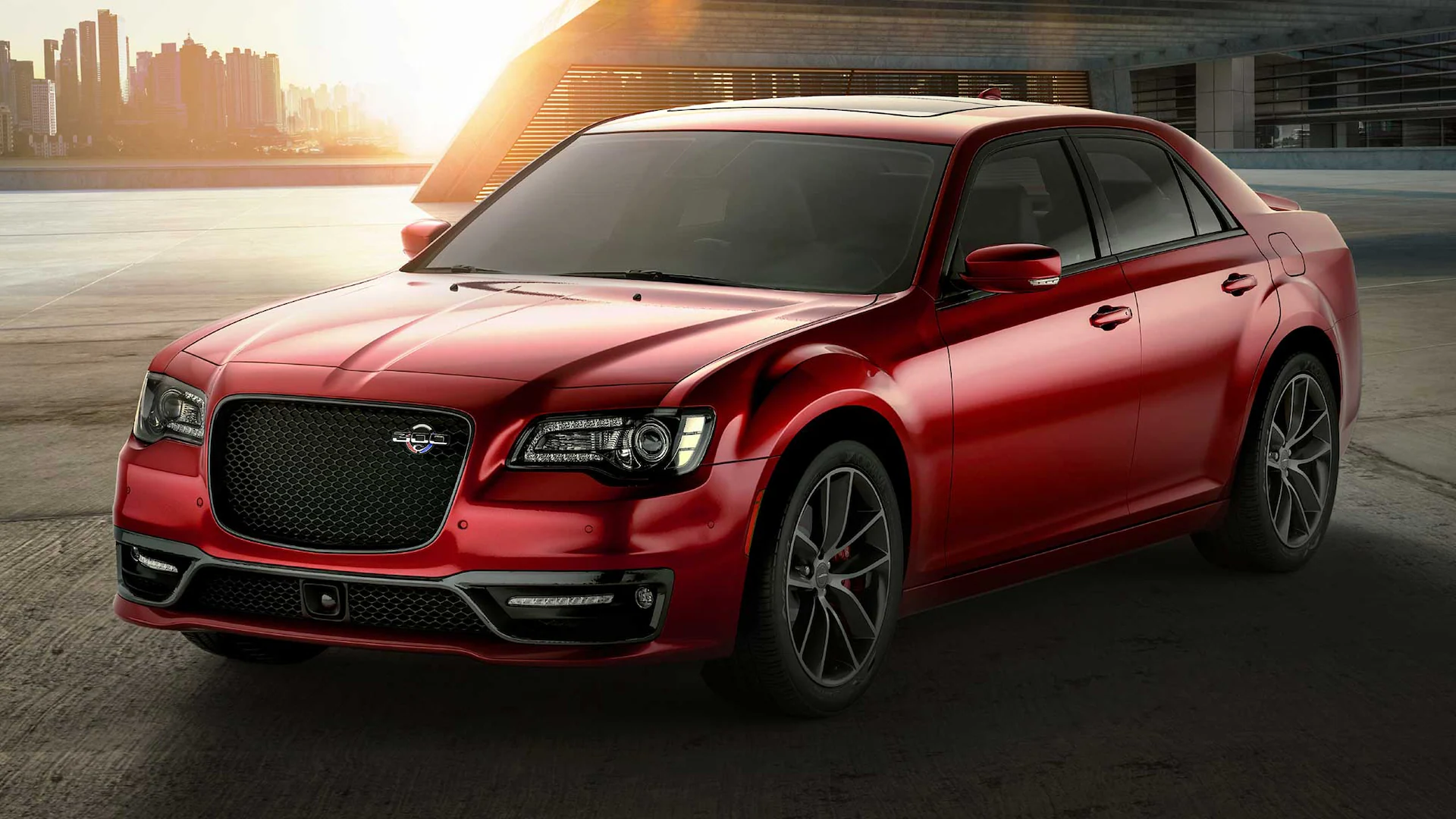
6. Chrysler 300
The Chrysler 300 is a full-size sedan known for its bold, boxy design and old-school American luxury. Ironically, despite its large body, it features a surprisingly small and upright rear windshield that restricts visibility uniquely compared to sloped-roof sedans. The small size of the window doesn’t just impact the view—it makes the entire rearview mirror feel like it’s providing an outdated, narrow image. It’s almost as if the view is framed by a postage stamp rather than a proper window.
The design is influenced by the car’s emphasis on a high rear deck and broad trunk, which sit high enough to block a significant portion of what you’d expect to see from the driver’s seat. This design choice gives the car its imposing stance, but it also means that checking the rearview mirror offers limited help when reversing or monitoring highway traffic. Add to this the thick C-pillars and the flat roofline, and you have a sedan that feels like it was engineered in an era where visibility wasn’t a top priority.
In real-world driving scenarios, this setup can be problematic. Drivers often struggle with parallel parking or backing into tight spaces, particularly in areas with short curbs or other low obstacles. The lack of vertical visibility can also make it harder to judge how close the rear of the vehicle is to another car or wall. The 300 does come with a rearview camera in newer trims, but the visibility issue has remained a point of critique throughout its production run.
From a passenger’s perspective, the tiny rear window doesn’t provide much light or external awareness for those seated in the back. It adds to the cocooned feeling but may make the cabin feel more enclosed than it actually is. For a vehicle that otherwise celebrates space and comfort, the restrictive rear window seems like an unusual flaw. It’s a reminder that big cars don’t always mean big visibility, especially when styling overtakes utility.
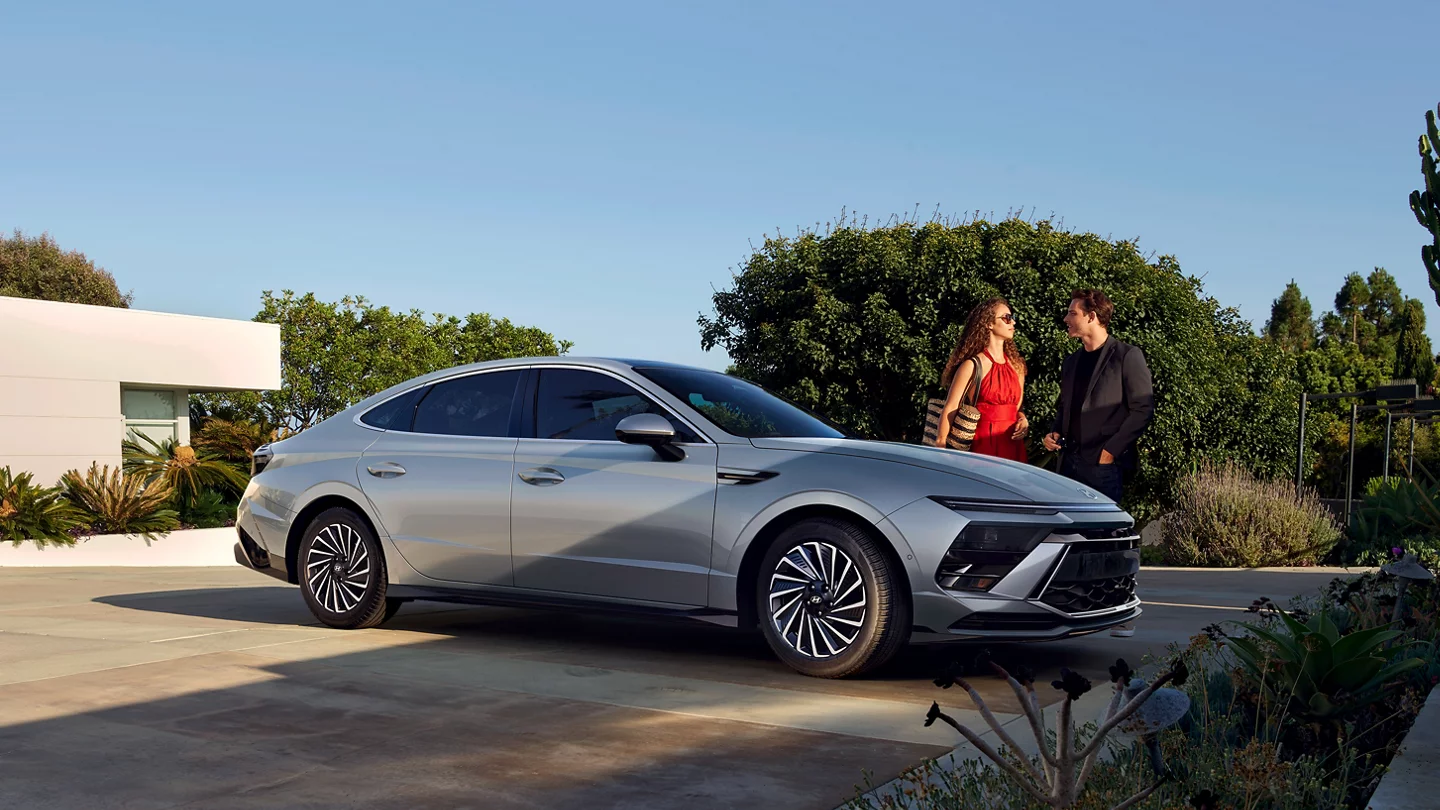
7. Hyundai Sonata (8th Generation)
The 8th-generation Hyundai Sonata introduced a bold, fastback-inspired design that drastically departed from its more traditional predecessor. The swooping roofline and dramatically styled rear give the car a modern and athletic silhouette, but the rear windshield pays the price.
The new sloped roof compresses the height of the rear glass considerably, creating a narrow rear view that can leave drivers feeling disconnected from what’s happening behind the vehicle. In a segment where practicality once reigned, the Sonata now leans heavily into style, for better or worse.
This design decision introduces multiple visibility concerns. The high rear deck and thick C-pillars crowd the already-small rear windshield, creating significant blind spots. For everyday driving, particularly reversing or merging in tight city traffic, this means the driver must rely much more on the vehicle’s camera system and parking sensors.
The Sonata’s camera quality is decent, but when it comes to rapid decisions in real-time driving, such as backing into a parallel space or avoiding a low-lying object, natural visibility would still be preferable. The sloped rear glass just doesn’t provide enough of that confidence.
Another problem is how this affects nighttime and poor-weather driving. The narrow window has limited coverage from the rear defogger lines, and its steep rake causes water and dirt to accumulate in awkward ways. Without a rear wiper, this can become a hazard in rainy climates, as your only rearward visibility may come from a fogged-up or dirty pane of glass. Drivers in colder regions report that snow buildup along the upper edge can make the view through the rear mirror nearly useless until it fully melts or is manually cleared.
While the new Sonata excels in areas like technology, comfort, and value, the change in design language brought with it a new set of compromises. The small rear windshield is a prime example of form overtaking function, and for many long-time Hyundai drivers, it’s a noticeable departure from the car’s practical roots. For those who prioritize confident visibility in addition to sleek design, the new Sonata may require some getting used to—or at least more reliance on tech than ever before.
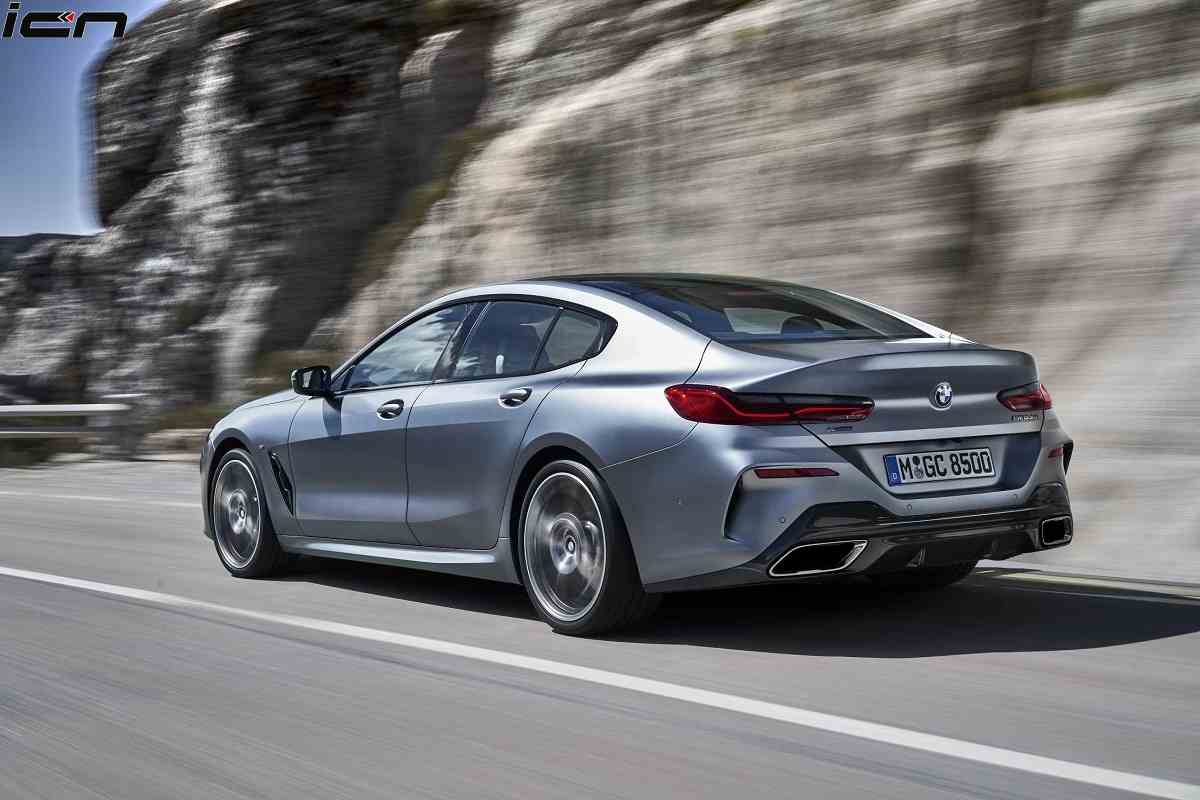
8. BMW 8 Series Gran Coupe
The BMW 8 Series Gran Coupe is a luxury grand tourer with a wide stance, low roof, and coupe-like elegance. Its elongated shape and swooping rear end make for a striking appearance, but not for stellar rearward visibility.
The rear windshield is narrow, short, and slanted at such an angle that drivers sitting in the front seat are often surprised by how little they can actually see through it. The elegant proportions of the car are impressive to look at, but they present real challenges when it comes to everyday usability.
The sleek design creates a low rear roofline that pushes the glass nearly flat, which minimizes the window’s height and cuts down on the viewable area. Adding to the issue are thick rear pillars and a high trunk lip that obstruct most of the view below the horizon line.
When backing up or merging into traffic, this configuration forces drivers to trust BMW’s driver-assist technologies—namely, the backup camera and ultrasonic sensors. While these systems are advanced and accurate, they still don’t fully alleviate the anxious feeling of relying entirely on tech rather than eyes.
Parking and reversing are especially difficult in the 8 Series Gran Coupe, despite its suite of parking assist tools. The limited rear visibility makes gauging distances and spotting pedestrians or low objects more difficult than in other BMW models. You’ll often need to make extra mirror checks or use the 360-degree camera system to ensure full awareness.
For such a high-end vehicle, the compromised visibility may be unexpected, particularly for those coming from BMW’s more upright sedans like the 3 or 5 Series, which offer more practical glass layouts.
Inside, the small rear window also affects rear passengers. It reduces outward visibility for back seat occupants, which can make the cabin feel more closed off, particularly on longer drives. While BMW may have hit a home run in aesthetics and driving feel with the 8 Series Gran Coupe, it’s clear that rear visibility was sacrificed at the altar of style. For buyers seeking both luxury and practicality, this could be a critical consideration.
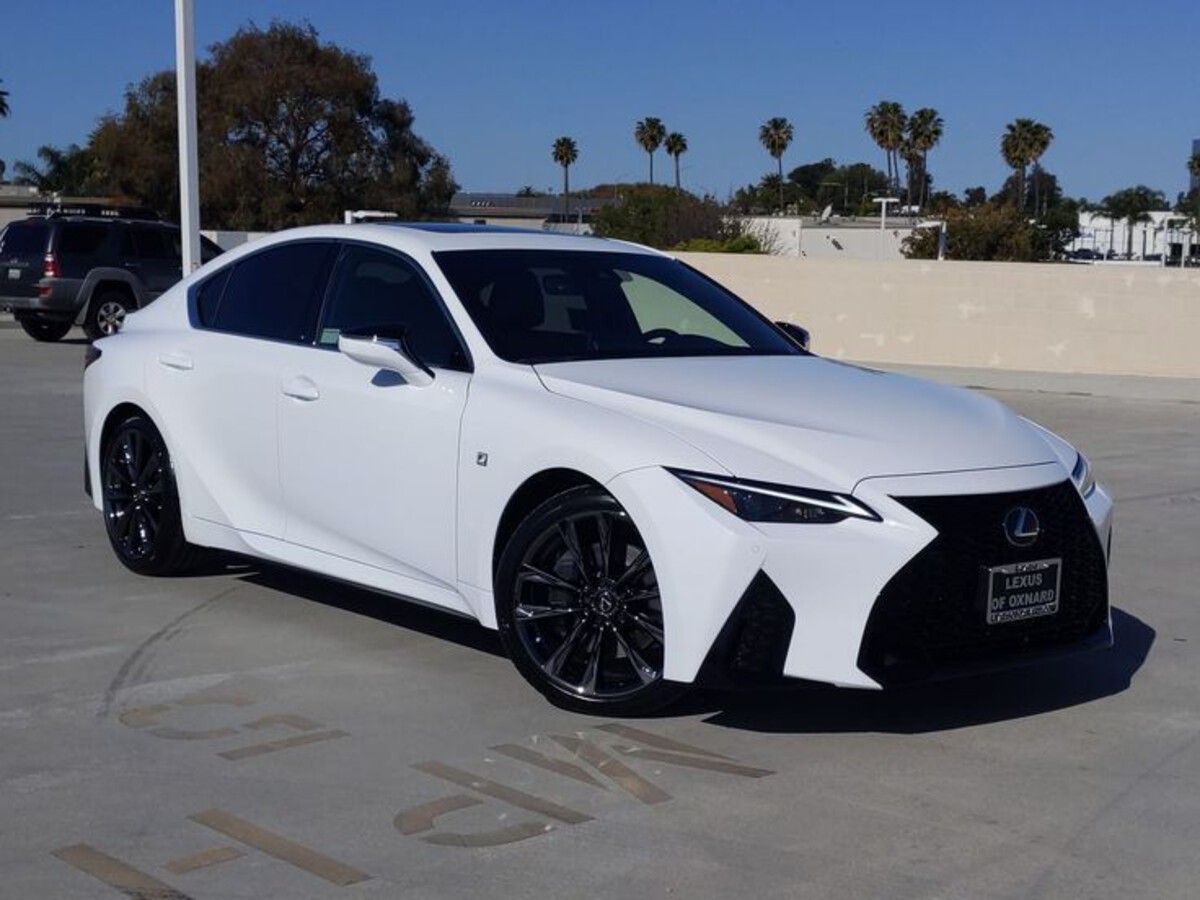
9. Lexus IS
The Lexus IS sedan has long targeted sport-luxury buyers with its blend of Japanese refinement and rear-wheel-drive athleticism. In its latest generation, the IS adopted a more aggressive and athletic stance, including a tightened rear design that drastically reduced the size of the rear windshield. The angular bodywork and sloped C-pillars give the car a poised, crouched look—but from inside the cabin, that stylish profile limits what drivers can see when looking behind them.
From a driver’s perspective, the rear windshield in the IS feels more like a wide letterbox than a proper window. Its height is short, and the angle at which it meets the trunk lid significantly reduces the vertical field of vision. Whether you’re backing out of a parking space or checking your mirror for oncoming vehicles, this can quickly become frustrating. Lexus includes a good-quality camera system, but relying on it is almost mandatory due to the restricted natural sightlines.
Adding to the concern are the thick rear headrests and tall trunk design, which further block the limited view. While Lexus does a good job with camera integration and sensor accuracy, these don’t completely compensate for the lack of a comprehensive rear window view, especially when drivers need quick judgment during real-time maneuvers.
The vehicle’s performance-oriented suspension and low seating position also mean that the rear glass feels even farther from the driver’s natural line of sight, making over-the-shoulder glances less effective.
In wet or snowy weather, the IS doesn’t offer much help, as the steeply sloped rear window lacks a wiper and takes longer to clear with defoggers. For a luxury car that prides itself on being a well-rounded daily driver, this design shortcoming stands out. Lexus has refined the IS’s performance and cabin, but its rearward visibility doesn’t match the brand’s usual commitment to user-friendly design. If you frequently drive in traffic, urban areas, or busy parking lots, the IS may test your patience in ways you wouldn’t expect from a Lexus.
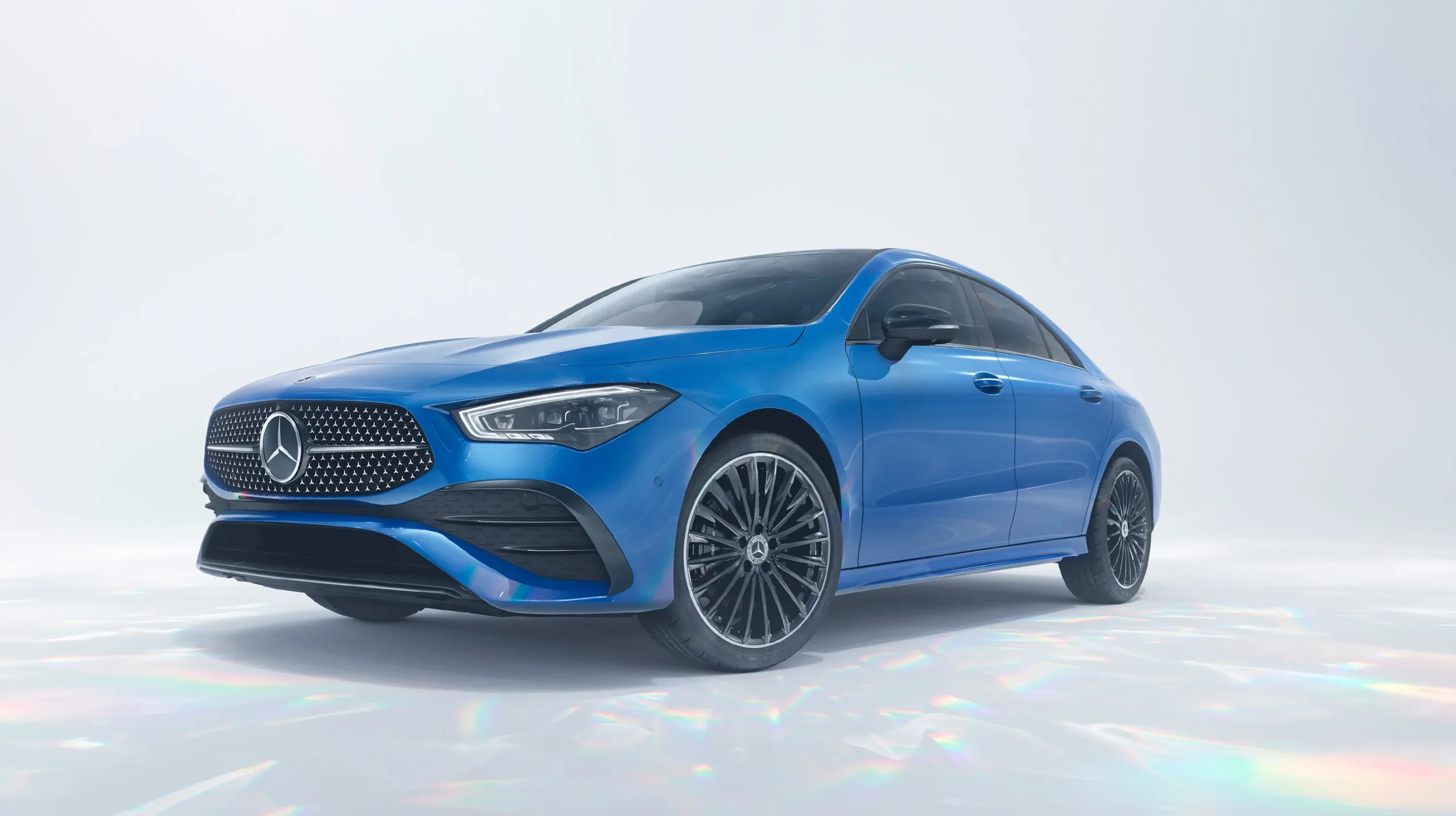
10. Mercedes-Benz CLA-Class
The Mercedes-Benz CLA-Class is marketed as an entry point into the brand’s luxury sedan lineup, combining compact proportions with the aesthetics of a four-door coupe. The CLA’s most defining feature—its sharply sloped roofline—is also the source of its greatest visibility weakness: an extremely small and slanted rear windshield. From the outside, it completes the vehicle’s elegant, flowing design. But from the driver’s seat, it’s one of the most limited rear views you’ll find in a sedan today.
The rear windshield is not only shallow in height but also tilted at a sharp angle, making the usable view through the mirror surprisingly limited. Drivers often describe the visibility as tunnel-like, with little spatial awareness beyond a small area at eye level. Combined with very thick rear roof pillars, the CLA creates serious blind spots on both sides of the back glass. It’s a visibility issue that becomes apparent immediately when trying to park, back out, or merge, especially in urban environments where precision is key.
Even though Mercedes equips the CLA with parking sensors and a clear rear camera, those features don’t remove the uneasiness of not being able to physically see surrounding objects. This becomes more challenging in poor lighting or inclement weather, where even the best cameras struggle.
The steep angle of the rear glass also makes defogging and cleaning less effective, and there’s no rear wiper to help with water runoff or snow. These may sound like minor issues, but in daily commuting scenarios, they quickly add up.
Rear passengers don’t fare much better. The combination of a high trunk line and low-slung window makes the rear cabin feel dark and enclosed. While the CLA’s performance, tech, and design are appealing, its lack of rear visibility is a clear trade-off for those coupe-inspired looks. For drivers who prefer full awareness and ease of maneuvering, the CLA might prove more frustrating than it appears at first glance.
Also Read: Top Engines That Can Survive Without a Working Cooling Fan
Automotive design is constantly evolving, and nowhere is that more apparent than in the sedan segment. As manufacturers compete to make their vehicles more visually distinctive, sleek, and modern, many are embracing coupe-like profiles, sharply sloped rooflines, and aggressive rear-end styling.
While these choices often lead to sedans that are undeniably attractive and aerodynamic, they also introduce significant compromises, chief among them being diminished rear visibility.
Aesthetics have started to take precedence over functionality, and one of the clearest examples of this is the shrinking rear windshield, a trend that affects vehicles across a wide range of price points and categories.
As we’ve seen in this list, some of the most popular and prestigious sedans—from the Dodge Charger and Tesla Model 3 to the BMW 8 Series Gran Coupe and Mercedes-Benz CLA—are guilty of this exact trade-off. Despite offering advanced technology, top-tier safety equipment, and powerful performance, they restrict rearward vision to such a degree that it can affect everyday driving comfort and confidence.
Whether it’s due to sloping glass angles, thick rear pillars, high trunk designs, or overly aggressive styling cues, the end result is the same: drivers are left with a narrow, limited view of what’s behind them. This creates a dependency on backup cameras, parking sensors, and blind-spot monitoring systems—tools that should ideally supplement good visibility, not act as substitutes for it.
The implications of these design choices extend beyond just parking lot inconvenience. Limited rearward visibility impacts safety in a meaningful way. Drivers need to feel confident that they can judge distances accurately, spot pedestrians or cyclists quickly, and detect oncoming vehicles without lag or guesswork.
The reduced visibility also affects weather performance, with sloped windows fogging up faster, being harder to clean, and often lacking rear wipers. Snow and rain have a way of clinging to shallow glass, making them even more difficult to manage in colder or wetter climates.
Even the most advanced camera systems can become less reliable under such conditions, particularly if lenses are obstructed or visibility is compromised by environmental factors. Another overlooked consequence of small rear windshields is how they affect the passenger experience.
Rear-seat occupants have fewer outward sightlines, making the cabin feel more enclosed or even claustrophobic. This is especially true in sedans that combine small windows with dark interior trims.
While these might enhance the sense of luxury or sportiness, they can diminish comfort and visibility for passengers, especially younger ones who enjoy looking out the windows on longer drives.
Ultimately, the trend of shrinking rear windows serves as a cautionary tale for buyers who value everyday usability over design theatrics. It’s easy to be swayed by sleek promotional photos and showroom lighting, but test driving a car under real-world conditions—especially in a crowded parking lot or during a rainy commute—will quickly reveal whether visibility is a deal-breaker.
Practicality should never be ignored, especially when it relates directly to your safety and peace of mind. So while technology may continue to fill in the gaps, nothing truly replaces a clear, wide view of the road behind you—and that’s something worth remembering the next time you step into a stylish sedan.

